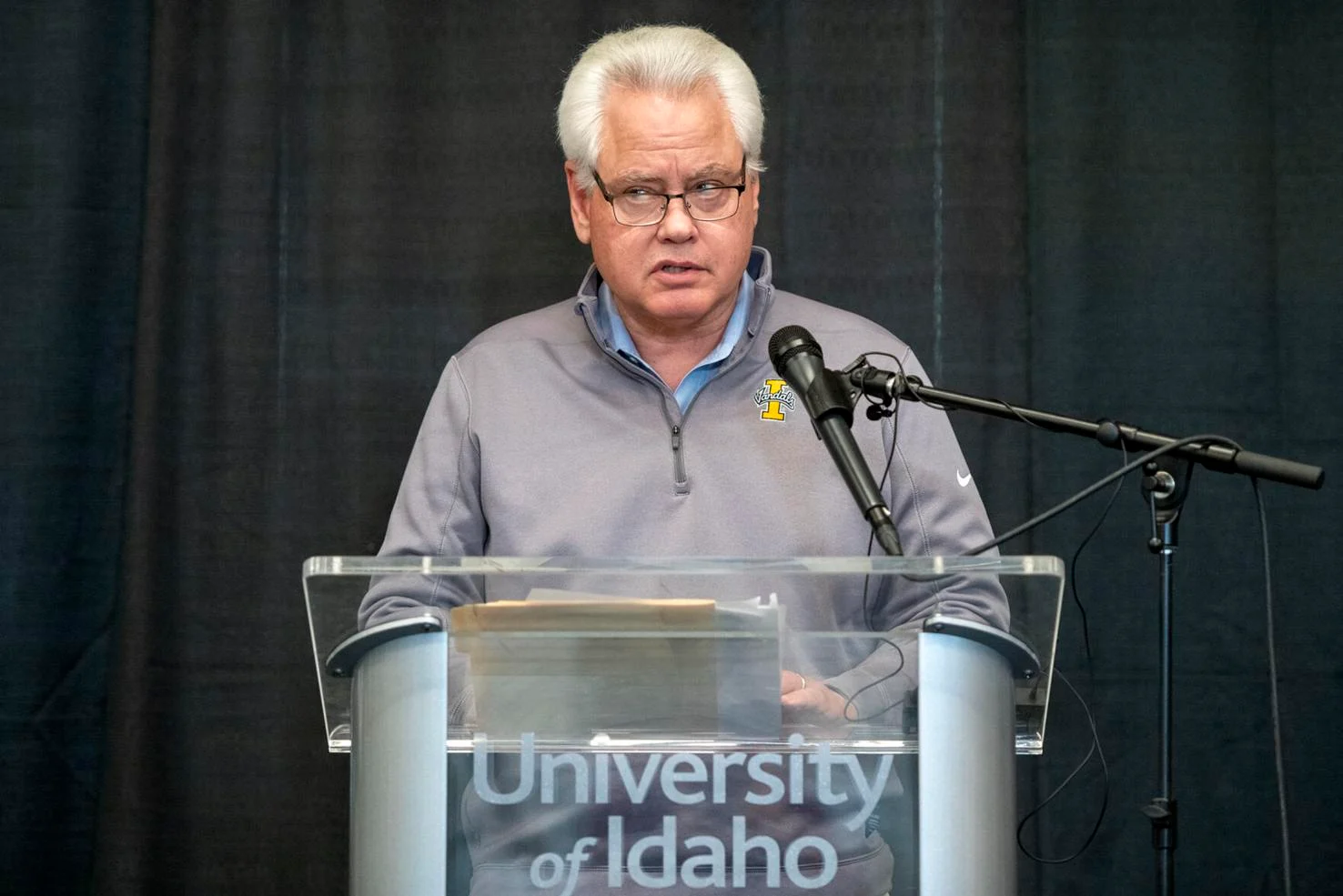
The question that the Idaho Joint Finance and Appropriations Committee members should have asked: is this money you discuss fungible? In other words, while taxpayers are not funding the UI’s diversity, equity and inclusion (DEI) initiatives, they are being funded nonetheless. And as a state institution, the Joint Finance and Appropriations Committee can say “not in Idaho”.
As has been the case the past few years, Green faced questioning about the university’s programs and positions related to diversity, equity and inclusion. Sen. Scott Herndon, R-Sagle, asked Green about the percentage of its budget that goes toward staff positions related to “DEI” in relation to Lewis Clark State College and Idaho State University.
Green, as he did in his budget presentation last year, pointed to the 2021 independent report the university commissioned to look into claims of “social justice ideology” and indoctrination.
The report found that the number of staff positions was proportionate related to the university’s size, and they had notable positive impacts on student outcomes. As an example, he highlighted progress made in the number of women graduating with engineering degrees.
“No evidence disadvantages nonminority students,” he said.
Of the 23 positions identified as relating to diversity, equity and inclusion, Green said 21 are fully paid through nonstate dollars. There are two positions that are partially funded with state funding — one is a Micron director of diversity, which is 77% funded through nontaxpayer money, he said, and the other 23% goes toward general education. The other position is the associate dean of the college of education, and it was determined that less than 10% of her job is associated with DEI programs. He said there’s an $8,000 stipend to pay for that work.
“So in effect, there’s really zero state-appropriated tax dollars going to any of these positions,” he said.
Green praised the university’s growth and successes, including recently bringing in its largest research grant in school history, $55 million from the U.S. Department of Agriculture to help farmers and ranchers combat the effects of climate change on their industry.
Federal money flows freely. Who pays for that?
The governor’s proposed budget includes $15.5 million for UI facility projects. Of that total, $5.4 million is for the school’s McCall Field Campus to construct a dining lodge and kitchen facility, according to the Legislative Budget Book. The campus houses the university’s Master of Natural Resources in environmental education and science communication, and the McCall Outdoor Science School, known as MOSS.
Green lauded the school’s hands-on experience for students in STEM, which stands for science, technology, engineering and math. The go-on rate at the school is 20% higher than the state average, he said.
The go-on rate tracks high school graduates who enroll in a two- or four-year college.
Since it is strictly a college enrollment measure, it doesn’t take into account the high school graduates who decide to pursue a professional certificate.
And the fall go-on rate doesn’t account for high school grads who put college on hold to enlist in the military, serve a Mormon mission, or take a “gap year” to earn money for tuition.
The funding for improvements will allow the school to serve more students in the program, he said.
Another $4 million in the budget would go toward design and construction of a new meat science and innovation center. The current building is more than 50 years old and is the only USDA-inspected lab in the region, Green said.
“The center allows us to add value to Idaho agricultural products,” he said, “instead of shipping cows out of state for processing, this facility will keep our cows in Idaho.”
UI is also requesting $2.3 million in capital funds to continue funding a new Parma Research and Extension Center. The existing facility will celebrate 100 years of operation in 2025, Green said.
The new facility will expand the research space and capabilities at that location. The project broke ground, but inflation has dramatically increased costs, he said.
There is also $3.8 million in the budget proposal for a new Joint Reserve Office Training Corps facility on the Moscow campus.
Green said the school has a balanced budget and continues to improve its financial standing from 2019 when it faced a $20 million deficit.
“But inflation is taking its toll,” he said.
The inflationary increases are totaling more than $20 million, which when combined with a potential lack of funding for employee pay will lead to a $1 million gap in its operating budget. He urged support for increasing the state’s employee compensation.
The university in 2022 had a turnover rate of 22%, he said, which was a 50% increase from the year before.
However, he said he supports the governor’s proposed budget in total and the university is not asking for any additional money. He appreciated the proposal for discretionary funding to combat the impacts on inflation, which includes $1.8 million for UI.
He said in fiscal year 2021, the university cut $22 million, including $18 million in permanent personnel costs, from its general education budget.
“We truly don’t have any more tools at our disposal to close the gap between the impacts of inflation and paying for CEC (change in employee compensation) without impacting our students,” he said.
Guido covers Idaho politics for the Lewiston Tribune, Moscow-Pullman Daily News and Idaho Press of Nampa. She may be contacted at [email protected] and can be found on Twitter @EyeOnBoiseGuido.
UI president requests funds
BOISE – University of Idaho President C. Scott Green echoed fellow university presidents in noting the impacts of inflation in a presentation to state budget writers, which included an emotional thank-you for security funding and a pointed refutation of criticism of the university’s diversity, equity and inclusion programs. On Friday, Green made his case to the Joint Finance and Appropriations Committee; UI is requesting around $103 million in state general funds.